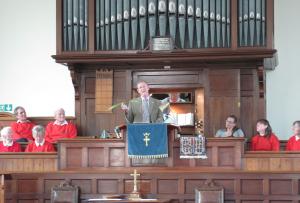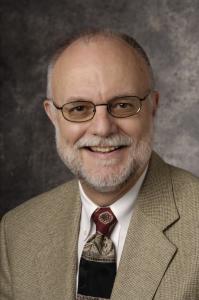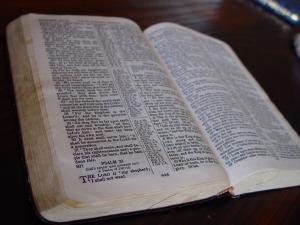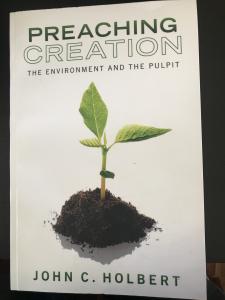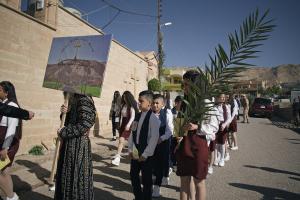 Once again it is time for that long-practiced event that inaugurates Holy Week, Palm/Passion Sunday. Though different texts are chosen for a church’s emphasis on this day—Ps.118 for Palm Sunday and Is.50:4-9a for Passion Sunday—I think it fair to say that in many churches both focuses are likely to be found. More than a few congregations would not dare to begin this sacred week without the requisite children’s parade, snaking down the aisles of the church, shouting, “Hosanna,” which means “save us now,” though I doubt many of the children know what it means or care. They are far more interested in waving their branches, of whatever plant variety, and screaming as loudly as they can. After all, usually in church they are regularly admonished to keep their voices down; at least on this Sunday they can make all the noise they want at the beginning of the service. The processing choir usually follows, waving some plant material, too, and shouting also, perhaps slightly less rambunctiously, while balancing their choir folders as well as they can. Every year there is a peculiar joy generated by this rag-tag parade, and no one can conceive this Sunday without it.
Once again it is time for that long-practiced event that inaugurates Holy Week, Palm/Passion Sunday. Though different texts are chosen for a church’s emphasis on this day—Ps.118 for Palm Sunday and Is.50:4-9a for Passion Sunday—I think it fair to say that in many churches both focuses are likely to be found. More than a few congregations would not dare to begin this sacred week without the requisite children’s parade, snaking down the aisles of the church, shouting, “Hosanna,” which means “save us now,” though I doubt many of the children know what it means or care. They are far more interested in waving their branches, of whatever plant variety, and screaming as loudly as they can. After all, usually in church they are regularly admonished to keep their voices down; at least on this Sunday they can make all the noise they want at the beginning of the service. The processing choir usually follows, waving some plant material, too, and shouting also, perhaps slightly less rambunctiously, while balancing their choir folders as well as they can. Every year there is a peculiar joy generated by this rag-tag parade, and no one can conceive this Sunday without it.
I would like to take a guess at where all this hub-bub began and what it is historically we are commemorating in this promenade through the pews. Of course, the obvious answer to my question is we are recreating the parade that Jesus led into the city of Jerusalem, astride his kingly donkey, that presaged his arrest, trial, and death. But that answer is hardly complete. After all, it is only in John’s Gospel that we hear of palm branches being waved by a crowd; Mark has “leafy branches” strewn on the road along with some garments, while Luke makes no mention of vegetation at all, waved or otherwise. Matthew has both cloaks and tree branches, but both are laid on the road only, and none are waved. So, we have John only to thank for those waving branches, a reminiscence of the “festal procession with branches” mentioned in Ps.118:27.
I think there is a rather older event that informs just what it is that the writers of the gospels were doing when they describe Jesus, albeit in quite distinct ways, riding into the holy city. That older story may be found most clearly in the Apocrypha’s 2 Maccabees 10. The central event that motivates much of the books of the Maccabees in the intertestamental period is the tale of the desecration of the Temple by the monstrous Greek potentate, Antiochus IV Epiphanes, who was king of the Seleucid Empire from 175-164BCE, and was thus master of Judah. During that period the momentous Maccabean revolution was fomented, a revolution that led to the purification of the Temple of Jerusalem after Antiochus’s forces had desecrated it, either by displaying Greek battle flags in the sacred sanctuary or sacrificing a pig on the altar, or both. The desecration caused the family of Mattathias, and particularly his son Judas, the Hammerer, to resist Antiochus, and ultimately to defeat him so as to force him to leave the city and to allow the Judeans to reconsecrate the Temple in 165BCE, following a three-year struggle. The modern Jewish festival of Hanukkah commemorates the Temple’s purification and rededication.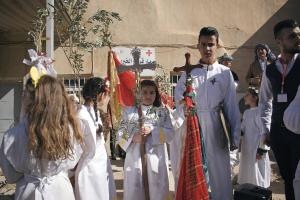
The purification of the temple is described in 2 Maccabees 10. Judas, now called Maccabeus, “recovered the temple and the city; they tore down the (pagan) altars that had been built in the public square by the foreigners, and also destroyed the sacred precincts” (2 Macc.10:1-2). Prior to the purification, all vestiges of foreign corruption of the sacred space must be expunged. “They purified the sanctuary by making another altar of sacrifice,” and then striking sacred flints together, they rekindled the fire on the new altar, after two years hiatus, and began the ancient sacrificial practice, “and offered incense, lighted lamps, and put out again the bread of the Presence” (2 Macc.10:3). Then, after fervent prayer, imploring YHWH to save them from such horrors in the future, and to forgive them of the sins they might still commit (2 Macc.10:4-6), they proceeded to “carry ivy-wreathed wands, beautiful branches, and fronds of palms, offering hymns of thanksgiving to the one who had granted them success in the purification of God’s holy place” (2 Macc.10:7). Then they made a public proclamation, and ratified it by vote that “the whole nation of the Jews should observe these days every year” (2 Macc.10:8). And so they do even to this day. “Such was the end of Antiochus, who was also called Epiphanes (that is, “God manifest”)” (2 Macc.10:9).
In that story, I suggest, lies the basis for the celebration of the palms on what we now call Palm Sunday. If that is so, what Jesus is said to be doing during his entry into Jerusalem is far more than a simple celebratory act. Jesus is performing a distinctly political action by riding that donkey into the city; just as the temple purification was accompanied by “ivy wands, beautiful branches, and palms,” and proclaimed the end of Antiochus, so the clothes, branches, and palms announce both the purification of the temple and the end of Roman rule in Jerusalem. In a much-quoted imaginative recreation, John Crossan and Marcus Borg, provide on that long-ago day two contrasting parades, moving into Jerusalem. In the first, Pilate, who spent most of his time as procurator of Judea living in a salubrious sea-side palace in Caesarea Maritima, coming to the teeming and dangerous Jerusalem only during Jewish festival days when the dangers of revolt were high, leads a military phalanx of soldiers and officials from the west into the city. At the same time, imagine Crossan and Borg, Jesus leads a much smaller crowd into the city through the eastern gate. This useful conjecture highlights the deeply political act that Jesus is in fact performing. Against the background of the Maccabean story, the authors of the Gospels want their readers to be reminded of the older tale, to suggest that the upcoming temple cleansing, the trial, and the execution of Jesus is far more than an individual act of personal salvation and atonement. It is an announcement that the power of the universe is not to be found in whoever happens to be ruler of the day; Jesus has come to overturn the expectations of those who claim authority. When the crowds around Jesus shout, “Hosanna,” they are demanding much more than a forgiveness of their individual sins; they are asking for societal change, for a revolution of power, for a purification of the religious and social constructs of their own time.
So, this year, when you gaze dewy-eyed at the children marching into the church, waving their branches, remember that they are commemorating nothing less than a revolution, a demand for purity, not just of heart, but of culture, not merely a forgiveness of my sins, but a hope for something really new in the world, namely a coming of the realm of God now, a world of justice and righteousness that includes all of God’s people.
(Images from Wikimedia Commons)
